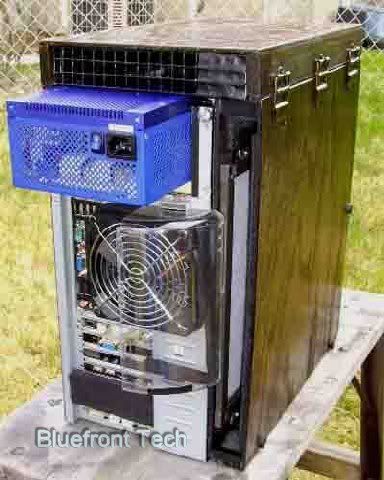We all agree hot air rises. The main problem is to determine if it's effective enough.
To make it work best the temp difference must be as big as possible.
That's no problem when using the same logic in a fireplace to get rid of the smoke.
But our aim is to get the case temp at room temp. So no temp difference at all.
So we are killing our own concept. Surely there will be a balance. The min. case temp.
The coolest components are the most heat sensitive. I have $500 experience with that

It was somewhere in the P2 or P3 era. A very standard PC with 3 HDs.
One of them being a then high end IBM DeskStar. It's heat took down all 3 drives.
Surely heat was causing it but I think the main problem was the heat being trapped between the drives.
My fear is that the upward draft isn't strong enough to suck out trapped heat.
I also fear the twirling air effect. The CPU and GPU are generating the most heat in a system.
They both create their own upward draft. Usually on the side and a little higher are the HDs.
Also creating their own airflow. Because the 3 hot air streams have different temps they start to mix.
But also interact. The coolest HD air will drop below the hotter GPU/CPU streams. And now we a have a twirling airflow.
So we end up with air pockets again and HDs will be killed. IMO a case temp of 60C is no real problem for most components.
Their life span will decrease but they usually get replaced far earlier than their lifespan.
But HDs won't survive long in such temps. And their performance will drop while they still are alive.
Every host component they own duct seems the most effective to me.
And when being forced using fans I think they should be pointing down.
The only reason for that is that I think that sound will be muffled when it blows down on the carpet.

